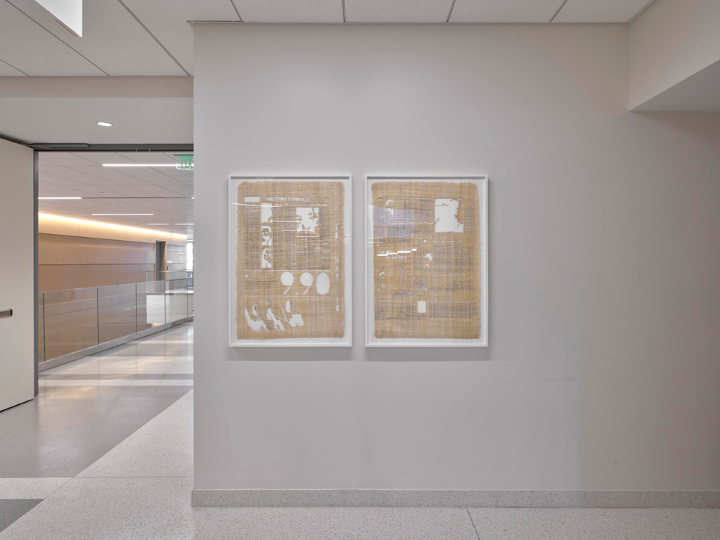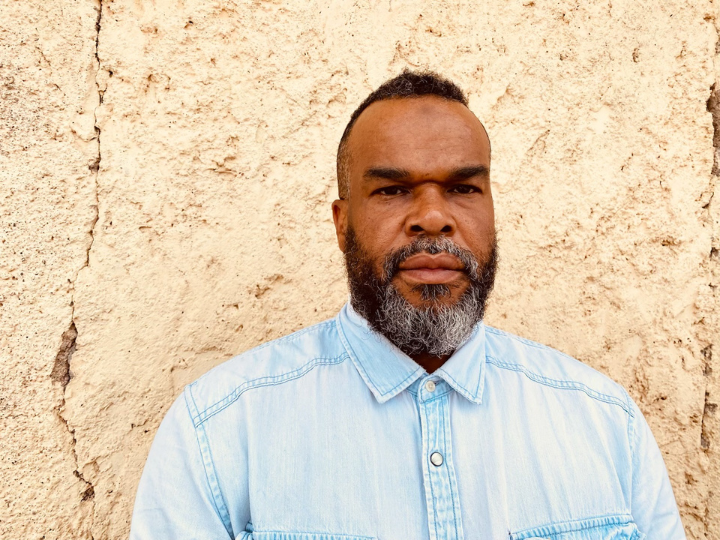
Jamal Cyrus, a Houston-based artist and University of Houston alum, was recently awarded a 2023 Guggenheim Fellowship in the category of Fine Arts. A total of 171 scientists, writers, scholars and artists were honored across 48 fields and chosen from nearly 2,500 applicants for their promise of enriching the lives of fellow human beings through their research and work.
Cyrus’ artwork investigates and shines a light on the political histories and visual culture of Black America through collage and assemblage. He uses ordinary materials and processes to provide a deeper understanding of issues Black Americans have faced and currently face.
He graduated from UH with his Bachelor of Fine Arts degree with a concentration in photography and digital media in 2004. He went on to graduate with a Master of Fine Arts degree from the University of Pennsylvania in 2008. His work has been featured across the country and world, including here at UH. His piece, “Eroding Witness, Episode 3 Season 20,” is featured in the John M. O’Quinn Law Building. His exhibition, “The End of My Beginning,” was first featured at UH’s Blaffer Art Museum in 2021 and went on to be featured at the Institute of Contemporary Art, Los Angeles and the Mississippi Museum of Art.
We talked with Cyrus about his award, his time at UH, his artwork and his future.
What went through your mind when you found out you were awarded a Guggenheim Fellowship?
In an odd way I was relieved. Relief because of what the fellowship will allow me to accomplish in the studio. It allows me to be a little more adventurous in the studio than perhaps I would have been before. At the same time, I felt very honored to become a part of a list of artists who have been awarded a Guggenheim, which is a pretty stellar cast.
What research will you be conducting as part of your fellowship?
Black American music has a global influence as seen through the blues, jazz, R&B, etc. My research will ask the question, how do you take aspects of that music, the principles of that music, conceptual ideas within that music, and then transform it or translate it into visual form?

degree with a concentration in photography and digital media.
What was your time like as a student at the University of Houston?
That was an exploratory period in my life. You really had the opportunity to express yourself in regard to what you make and what it’s about. At UH, I learned to become comfortable expressing myself and talking about my work.
I also think the block program at the University of Houston (this is an intensive “block” of semesters for fine arts majors enrolled in junior and senior level studio courses) is perfect training for graduate school. I got to be self-determining and self-directed in terms of describing what my projects were about. That helped me quite a bit.
Tell me about your piece “Eroding Witness, Episode 3 Season 20,” featured on campus.
A lot of the work that I do is about a particular aspect of American history that often gets overlooked. Ever since I was at UH, I started to really involve myself with Black political history. Very often, you hear about New York, Chicago, Los Angeles, but you don’t really hear a lot about Houston. So, I began visiting local archives and looking into who were some of the key players in the civil rights struggle within Houston. At the Houston Metropolitan Research Center, I found this story about an activist who was connected to the Student Nonviolent Coordinating Committee in Houston, and it seems the activist, Lee Otis Johnson, was set up in a drug sting and ultimately received a 30-year sentence for passing a marijuana cigarette to an undercover officer.
From my understanding, he was not distributing or selling, he was just sharing this cigarette. And really the reason he was being targeted was because of his work as a political activist.
That told me the same things that were happening in these other cities were happening in Houston. It's just that these histories, they just don’t get spoken about in the same way and written about in the same way. I felt compelled to try to do something about that history and work.
Why did you use diptych and papyrus, which are religious mediums, for the piece?
For me, there is a connection between Black resistance and Black politics and spirituality. Papyrus has a tie to ancient Egypt, which of course is in Africa. Another thing to know about papyrus, particularly old papyrus, is that it can erode. What I was trying to highlight within that piece, is the erosion, breaking down or forgetting of these individuals and of these histories.
Why is “Season 3, Episode 20” in the title?
I really wanted to give a person a sense that this is part of a long, episodic kind of history that has been forgotten.
What are you working on now?
I’m working on a public art piece with artist Charisse Weston. We're doing a commemorative glass sculpture for Barbara Jordan, which will be located at the Gregory School in Houston’s Freedman’s Town.